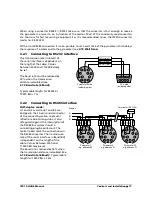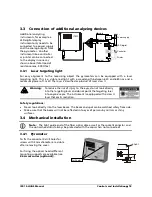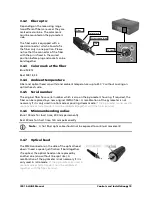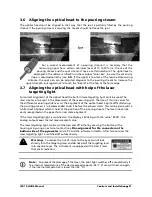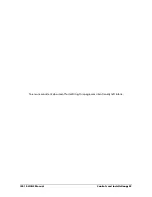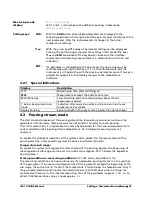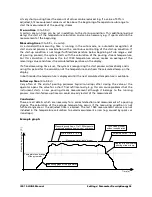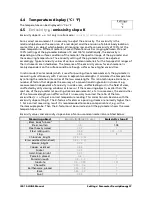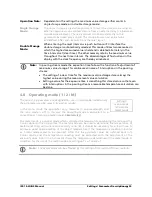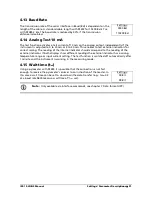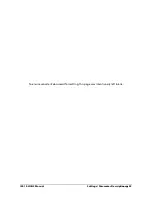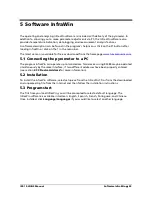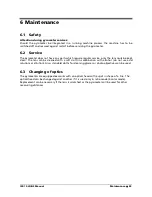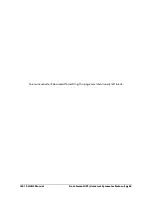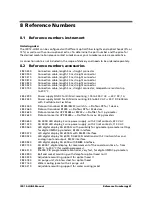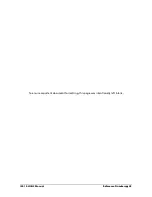
ISR 12-LO/GS Manual
Settings / Parameter Descriptions
•
27
4.4
Temperature display (°C / °F)
The temperature can be displayed in °C or °F.
4.5
Emissivity
ε
/
emissivity slope K
Emissivity slope (K =
ε
1
/
ε
2
) only in ratio mode.
Emissivity (
ε)
setting only in mono mode.
For a correct measurement it is necessary to adjust the emissivity. This emissivity is the
relationship between the emission of a real object and the emission of a black body radiation
source (this is an object which absorbs all incoming rays and has an emissivity of 100%) at the
same temperature. Different materials have different emissivities ranging between 0% and
100% (settings at the pyrometer between 10 and 100%). Additionally, the emissivity is
depending on the surface condition of the material, the spectral range of the pyrometer and
the measuring temperature. The emissivity setting of the pyrometer must be adjusted
accordingly. Typical emissivity values of various common materials for the two spectral ranges of
the instruments are listed below. The tolerance of the emissivity values for each material is
mainly dependent on the surface conditions. Rough surfaces have higher emissivities.
In ratio mode (2-color mode) which is used for pouring stream measurements, the pyrometer is
measuring simultaneously with 2 sensors in adjacent wavelengths. It calculates the temperature
by ratioing the radiation intensities of the two wavelengths. This ratio technique eliminates a
number of factors that degrade the accuracy of a conventional single-color instrument e.g.
measurement independent of emissivity in wide areas, unaffected by dust in the field of view,
unaffected by dirty viewing windows or lenses or if the measuring object is smaller than the
spot size of the pyrometer (at pouring stream measurements), etc. In some cases, the emissivities
of the two wavelengths can differ so that it is necessary to correct the ratio of the two
emissivities (
ε
1
/
ε
2
) to get a correct temperature reading. This correction can be done with the
emissivity slope setting K. The K-factors of metals or a pouring stream are normally higher than
1. For a correct measuring result it is recommended to make a comparison test, e.g. with a
thermocouple probe. Then the K-factor must be corrected until the pyrometer shows the same
temperature value.
Emissivity values and emissivity slope values of various common materials are listed below:
Measuring object
Emissivity
ε
(at 0.9 µm)
Emissivity slope K
„Black body furnace“
1
1
Steel, molten
0.3
1.05
Steel heavily scaled
0.93
1
Steel rolling skin
0.88
1.00 ... 1.01
Slag
0.85
1
Chromium, bright
0.28 ... 0.32
Brass oxidized (tarnished)
0.65 ... 0.75
Bronze, bright
0.03
Copper, oxidized
0.88
Nickel
0.22
Gold, Silver, bright
0.02
Porcelain glazed
0.6
1
Porcelain rough
0.8 ... 0.9
1
Graphite
0.8 ... 0.92
1.01
Chamotte
0.45 ... 0.6
1
Earthenware, glazed
0.86 ... 0.9
1
Brick
0.85 ... 0.9
1
Soot
0.95
1
Settings:
°C
°F





